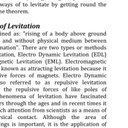NMR structures of anti-HIV D-peptides derived from the N-terminus of viral chemokine vMIP-II.
Ключевые слова
абстрактный
The viral macrophage inflammatory protein-II (vMIP-II) encoded by Kaposi's sarcoma-associated herpesvirus has unique biological activities in that it blocks the cell entry by several different human immunodeficiency virus type 1 (HIV-1) strains via chemokine receptors including CXCR4 and CCR5. In this paper, we report the solution structure of all-d-amino acid peptides derived from the N-terminus of vMIP-II, which have been shown to have strong CXCR4 binding activity and potently inhibit HIV-1 entry via CXCR4, by using long mixing time two-dimensional nuclear Overhauser enhancement spectroscopy experiments. Both of all-d-peptides vMIP-II (1-10) and vMIP-II (1-21), which are designated as DV3 and DV1, respectively, have higher CXCR4 binding ability than their l-peptide counterparts. They are partially structured in aqueous solution, displaying a turn-like structure over residues 5-8. The small temperature coefficients of His-6 amide proton for both peptides also suggest the formation of a small hydrophobic pocket centered on His-6. The structural features of DV3 are very similar to the reported solution structure of all-l-peptide vMIP-II (1-10) [M.P. Crump, E. Elisseeva, J. Gong, I. Clark-Lewis, B.D. Sykes, Structure/function of human herpesvirus-8 MIP-II (1-71) and the antagonist N-terminal segment (1-10), FEBS Lett. 489 (2001) 171], which is consistent with the notion that d- and l-enantiomeric peptides can adopt mirror image conformations. The NMR structures of the d-peptides provide a structural basis to understand their mechanism of action and design new peptidomimetic analogs to further explore the structure-activity relationship of d-peptide ligand binding to CXCR4.


